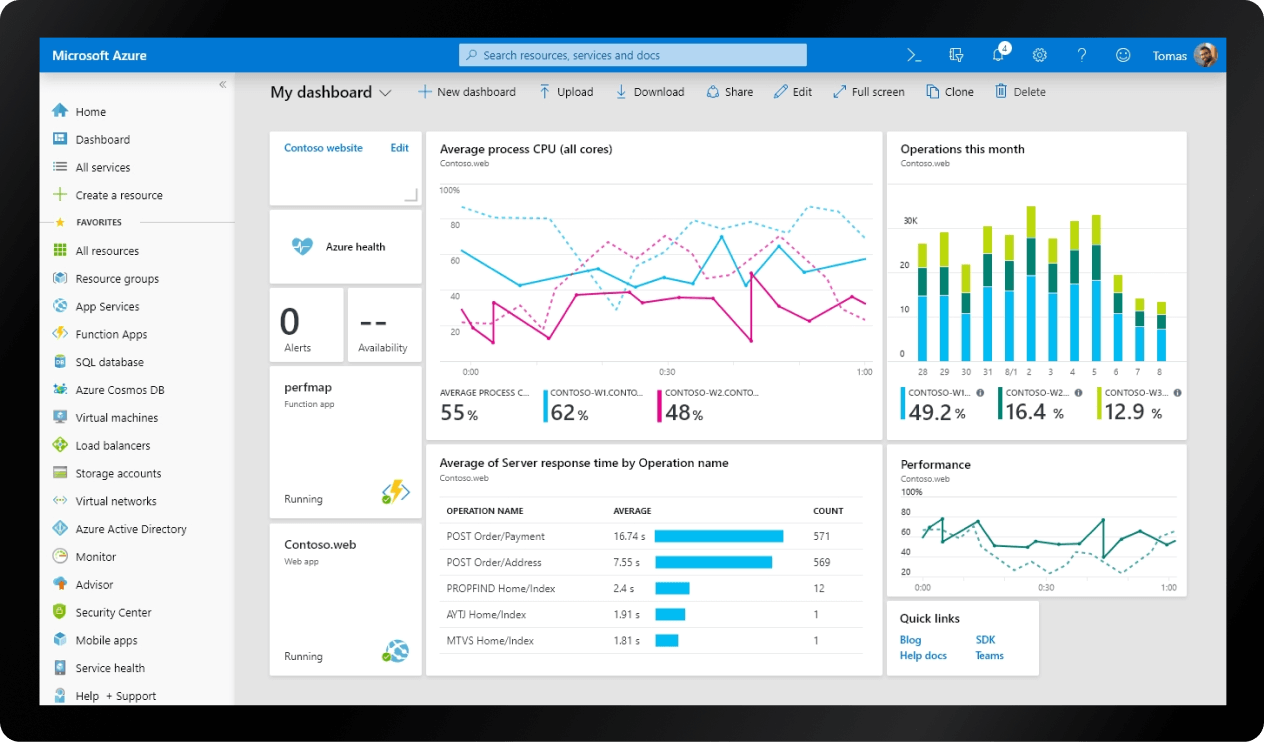Teams and OneDrive keep Microsoft at the Top of Gartner's Magic Quadrant
Seeing Microsoft at the top of Gartner's Magic Quadrant isn't surprising. Microsoft was a leader for Gartner's Unified Endpoint Management (UEM) evaluation last summer. And in the fall, it came out on top once again for the Magic Quadrant on Content Services Platforms. We cited Microsoft 365 and Intune as key components driving Microsoft's achievement for the UEM Magic Quadrant. Here we'll take a look at how Teams and OneDrive are excelling in the realm of Content Services Platforms.
Why is Microsoft at the top of Gartner's Magic Quadrant?

Gartner's Magic Quadrant is a way to evaluate technology providers in different categories, giving each of them a score that lands them somewhere on a quadrant graph. The graph measures completeness of vision against ability to execute. A company's strengths in these areas determines whether Gartner classifies it as a niche player, a visionary, a challenger, or a leader. Microsoft has a unique capacity for both vision and execution, which repeatedly puts them under the leader classification.
What does Gartner look at to make its assessments?
In its Content Services Platforms category, Gartner looks at these essential elements:
- Cloud scale. The platform must scale seamlessly to meet workforce demands.
- Protection. Gartner evaluates the flexibility and intelligence of the platform in information governance, security, and privacy controls.
- Fast time to value. The service should deliver business value quickly, through use of elements such as prebuilt applications or citizen-developer-based tools.
- User-centricity. It should also deliver a user-friendly experience with embedded mobility and consistency across multiple types of devices.
- Intelligence. Gartner also looks at the platform's engagement with artificial intelligence (AI), including machine learning and deep neural networks. These capabilities should be embedded in all key areas of the platform, as they are becoming increasingly relevant and useful in today's technology market.
To produce the Magic Quadrant, Gartner combines customer feedback with its own expert analysis of the market in consideration. Microsoft likes to give credit to its customers for providing great reviews of services offered---these include SharePoint and several elements of Microsoft 365. We'd like to highlight Teams and OneDrive here, so let's take a look at what these services can offer.
Microsoft Teams

Back in 2017, Skype for Business was replaced with Microsoft Teams. As part of the Office 365 suite, Microsoft Teams is cloud-based software that helps work groups collaborate better and more efficiently. It integrates Files, Notes, and Planner, as well as team conversations, together in one place. Workers can collaborate in real time from different locations, making it easy for those who work remotely. Here are some of the capabilities of Microsoft Teams:
- Chat-based group workspace which can be shared among any group size. Team members can create different channels to organize their communications by topic.
- Integration with other Office 365 applications like PowerPoint, Exchange, and SharePoint. For example, users can collaborate on editing a PowerPoint file within the Teams app. The integration of commonly used apps is helpful not only for companies but within education as well, especially for distance learning.
- Guest access so that team members can invite others outside the organization into messaging channels or meetings when necessary.
- Flexible calling options which allow users to call landlines and mobile phones through the Teams app, or even use it just like a traditional phone line with voicemail, automated call directing, and more.
- Capabilities for room-based video meetings through Microsoft's partnerships with video conference hardware vendors.
- The Microsoft Teams app store where users can search for third-party apps to use within Microsoft Teams, enhancing their workflows.
OneDrive

OneDrive is Microsoft's cloud storage service. It offers the general cloud convenience of being able to access files from anywhere, and knowing that you won't lose files if your own hard drive fails. Selected files can be accessed offline as well. An additional handy tool for Windows 10 users is the ability to sync Windows settings across all your devices. OneDrive for Business integrates nicely with Microsoft Teams, offering the seamless collaboration that customers have let Gartner know they appreciate.
If there were a Gartner quadrant that measured companies' security knowledge alongside their budgets, many would fall into an unacceptable quadrant. Check out our blog post on the intriguing concept of security poverty lines.
More Gartner Evaluation Charts
The Hype Cycle chart is another interesting one that Gartner puts forth to acknowledge a cycle that new innovations typically go through as they become more generally available and used. Read about this in Gartner's 2020 Hype Cycle for Cloud Security and AI in Gartner's Hype Cycle.
Stay connected. Join the Infused Innovations email list!
Share this
You May Also Like
These Related Posts

Microsoft Intune for Unified Endpoint Management Leads in Gartner's UEM Magic Quadrant 2019

Who's at the Top of Gartner's 2020 UEM Magic Quadrant? Intune.

No Comments Yet
Let us know what you think